In the 1st post in this series, I talked about hierophany, the idea of markers in the landscape holding significance for both individuals and the local community, and what that might mean for us as creative people. In the second post, I wrote a little bit about using things found in the landscape as part of our creativity, in particular making dye from nettles.
The dyed fabric is still folded up and awaiting another stint in the dyebath! In the meantime, here’s another way of thinking about landscape and creativity.
Gardens in Japan
During our trip to Japan, we visited a lot of gardens. It would be difficult to go to Japan and not go to at least one garden, as they are everywhere!
There are tea gardens, where you can have green tea and a peculiar Japanese cake, which is like an American style pancake with a kind of jam in the middle made from red soya beans. There are other gardens designed for strolling around, and there will usually be some sort of garden around a shrine or within a temple complex. Castles and palaces have parks around them. Some are huge and some are tiny, but all the gardens we visited were beautiful. And not once was the experience marred by a parkrun, dog poo, or stalls selling overpriced tiny quiches (I expressed my views on those here!)
The pictures in this post are ones that I took at a small garden in Hakone, a mountainous region not far from Tokyo.
Arts and Crafts in Japan
In lots of ways, Japan is a creative person’s dream. The history and heritage of arts and crafts in all their forms are a huge part of Japanese culture, and they are valued in a way that they are not in the UK. Here, and I suspect elsewhere in the west, it feels like a constant fight to keep them alive. Years of underfunding the arts, creative subjects being squeezed out of the school curriculum, and creativity being seen as frivolous and of less value than the serious fields of maths and science, means that skills are being lost. And alongside those skills, we are losing part of our culture, our heritage that comes with a way of life associated with a particular traditional skill or craft.
Even non traditional skills in the arts are at risk. One of my sons was not able to do GCSE music as not enough young people in his year group chose it. Another of my boys (he goes to a different school) was offered free bassoon lessons because nobody is taking up the bassoon anymore, and in a few years there won’t be any bassoonists. Except that even if more youngsters do take up the bassoon, they won’t be able to take music for A level or do a music degree if they can’t do GCSE music.
In contrast, in Japan, traditional arts and crafts are valued. People continue in the same practices that have been handed down through generations. A quick look on YouTube and there are videos of people making woven cord, paper, woodcuts, ceramics and gardens of moss. The skill and knowledge involved in creating and maintaining a Japanese garden are part of this creative heritage.
Nature in Japanese Culture
Nature plays an important part in Japanese culture. Our trip to Japan coincided with cherry blossom time, and although I knew it was a special time in Japan, I had no idea what it would actually be like.
There’s more to cherry blossom time than just the trees! Everybody wears pastel colours, with lots of pink and green. There are special things to eat, art exhibitions, and cherry blossom themed things on the shops. People have cherry blossom picnics, and some of the gardens are lit up at night.
One of my favourite cherry blossom memories occurred at a garden in Tokyo. There was a huge cherry tree not far from the entrance, covered in blossom. People were milling about, very calmly and quietly and not getting in anybody else’s way, like they do in Japan, when a gust of wind blew. It caught the blossom on this beautiful tree, and petals scattered like pink snowflakes. There was a collective gasp at the beauty of the blossom being caught by the breeze.
The idea behind the cherry blossom thing is that although other trees also have blossom, the cherry trees flower for only a short time. In a way that makes it more special, and it’s seen as a metaphor for life itself, beautiful but short.
In the autumn, people will visit the same gardens to see the leaves. Also in the autumn, there is tsukimi, which is a kind of harvest festival with moon viewing. And hanami, flower viewing, doesn’t just happen during cherry blossom time. There are plenty of flowers to see in the summer as well. Added to this is the idea of forest bathing, and the words they have to specifically describe they way the light falls through the leaves, and the way moonlight is reflected off a river. Many haiku are about nature, and birds, animals and flowers are often represented in art and textiles.
Japanese Religious Beliefs
Nature also plays an important part in Japanese religious beliefs. I don’t know very much about religion in Japan, but as with many Japanese things, it seems very different to how it is here in the west. It has more to do with culture and spirituality than with formally practising a religion.
The two main religions in Japan are Buddhism and Shintoism. Nature worship is part of Shintoism. This might be wrong, but as I understand it, some things in nature are viewed as having a spirit, and others attract divine spirits. The film My Neighbour Totoro reflects Shinto beliefs about nature.
Designing a Japanese Garden
Creating a Japanese garden is not an easy thing to do. It’s not just a case of getting the right plants, then plonking down some mossy rocks and installing a bridge or two!
One of things that makes it tricky is that you’re not supposed to see it all at once. As you follow the path around the garden, bits of it open up, and it offers different views as you walk around it. This is true whatever the size of garden. So whether it is huge, like the ones in Tokyo, or tiny, like the one on a mountainside in Hakone, you don’t see the whole thing all at once.
Perhaps it wouldn’t be right to say it’s not boring because there are surprises, but I suppose another way of saying it is that it’s always interesting (if you like gardens of course!), because there’s always a different view.
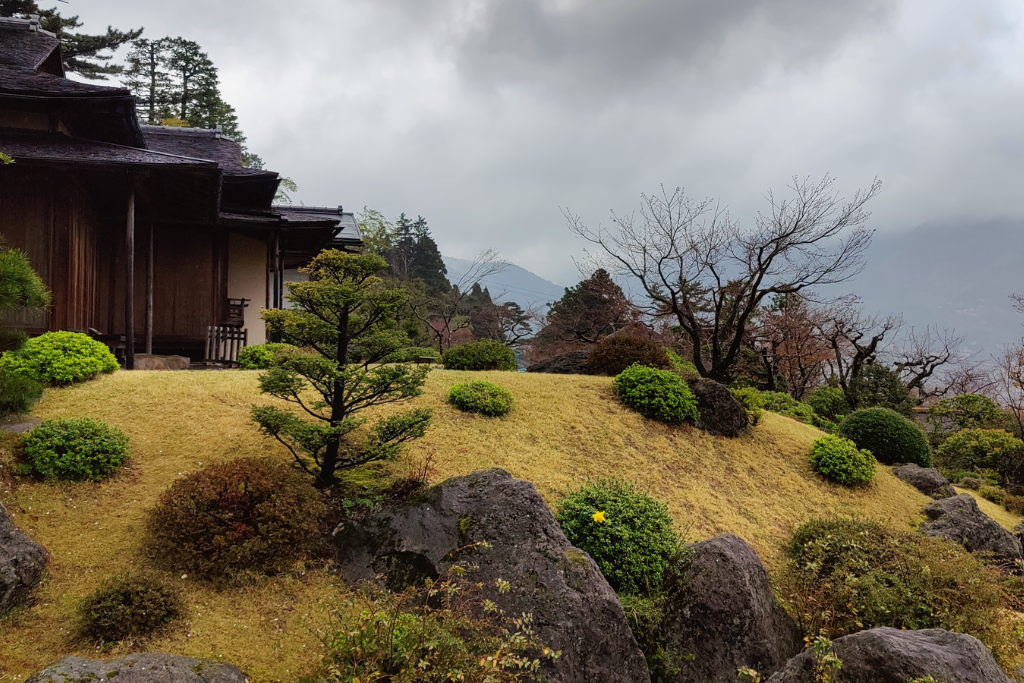
Borrowing From the Landscape
Another interesting idea in Japanese garden design is the idea of borrowing from the landscape. That means that in a Japanese garden, it’s not only about the plants and the landscape within the garden, it’s also what will be seen while someone is in it. So things like mountains, waterfalls and buildings are taken into account, even if they are not actually in the garden itself.
What This Might Mean for Creative People
In pondering what this might mean for creative people, two things have occurred to me. I’m going to be a bit vague here, because I think these ideas can relate to all kinds of creativity, but I’ll add some practical ideas as well. You might be able to think of some of your own, especially if you enjoy being creative in a way I don’t mention.
Context
As I’ve said, the context for the garden is taken into account as part of the design process. Japanese gardens don’t exist in isolation. There are other things around them, like temple buildings, sky scrapers, hills and mountains, even large trees, that a visitor to the garden will be aware of even if the objects are not actually there in the garden.
There’s a context for our creativity as well, and it will be there in the things we make to some extent, even if we don’t always realise it. The context could include all kinds of things. From where we live, the time we live in, what the climate is like, what stage of life we are at, to the kind of culture we live in and are familiar with, to what is going on elsewhere in the wider community and in the world.
Here are couple of examples of this. I saw a picture of a kitchen the other day, and I was instantly transported back to my granny’s house. It was the style of the handles on the cupboards, the fridge, the layout, the knobs on the cooker, the colours. Instantly I was there in the kitchen of my granny’s house in west London. I could smell cherry pie and my granny’s face powder, and feel the cold kitchen floor under my feet. I remembered my granny there, in a nylon dress and a house coat, complete with perm and orange lipstick.
My granny died in the mid 80s, and her kitchen mut have been thirty years old then. There was something about the style of both kitchens, my granny’s and the one in the photo, that said 1950s.
It’s the same kind of thing with styles of clothes, or lettering. Things that were popular at a certain time hark back to that time, whether people were aware of it or not.
An example of context in a different way is the African American Quilt Guild of Oakland. As well as making traditional quilts, their work often depicts the reality of life in and around Oakland, from the weather, to forest fires, to gun violence. There’s an interesting article about them here, and their website is here.
One thing we could consider doing is making ourselves aware of the context for the thing we are making. We can choose to ignore it, or we can include it. It doesn’t have to be explicitly about that thing, unless we want it to be, but we could consider where it fits with what we are doing, or how what we are doing sits within the wider context.
We could ask ourselves:
What else is around us?
What else is going on around us?
What else might be seen or experienced?
How does the thing I am making relate to the world around me?
Our creativity can be a way of highlighting things that matter to us or things that we are concerned about, or causes that we feel a solidarity with. It doesn’t have to always be serious! A mountain is a mountain. It’s not good or bad, fun or serious. There are no moral judgements about mountains! If you are concerned about the war in Ukraine, you could add some blue and yellow to something you are making. It might equally be that you want to use traditional techniques in what you make, even if it’s just a bit, or you live near a forest and you love it, and you want your work to reflect that, perhaps in the colours you use, or in the stitching.
Perspective
As you walk round a Japanese garden, you’ll catch glimpses of things. You might see part of a bridge, or a bit of a pond, and then it will disappear from view again, only to reappear a bit later. Only now, you’re in a different part of the garden and you’ll be seeing it from a different place. There will be be other plants, or big rocks, that you couldn’t see before. Or it might be that you could see them, but now it all looks different because you’re looking at them from a different perspective.
There are plenty of ways to view our creativity through the lens of a stroll round a Japanese garden!
Often there are different ways of looking at things. One way is to make something that looks different in some way depending on how you look at it. An example of this is fabric or another material that reflects light differently.
Sometimes colours and forms appear different when they are next to other colours or forms.
Another idea is to make something that is designed to be viewed from different angles. Perhaps something where there is more to it than meets the eye, where you really have to look.
Or, like the tempting views in a Japanese garden, you could hint at things without giving too much away.
Going back to the idea of looking at things in a different way, you could choose an idea and tackle it from a different perspective. For example, the African American Quilt Guild ladies made quilts depicting faces of young men who had died as a result of gun violence. In Coventry, there is a sculpture of an angel made from knives collected during knife amnesties. The artworks are about the same kind of issues, but they address them in different ways.
As well as approaching an idea from a different perspective, you could try things out in another way. Making a dress or a skirt when the fabric is cut on the bias rather than on the grain can result in something quite different. Another example is the neoprene dress that Tony made on the Great British Sewing Bee. I would never have thought of using neoprene for a party dress for a little girl!
Creativity, and a creative way of thinking, is an often overlooked part of problem solving. This is one reason why I believe that creativity is so important.
Looking at things from a different perspective is a way of problem solving. Sometimes making things can be about solving a problem. I’ve done this myself.
For example, I’ve asked myself, “Can I make a dress without a pattern in time to wear at a wedding in 3 weeks time?” The answer was yes! I made the dress and I wore it a lot! “What can I do to corral the mess in my giant bag?” The answer was a bag organiser.
Sometimes the problem might be an existing one that we want to try to solve. Other times, we can invent weird problems for ourselves. One question that has just this minute popped into my head is, “Can I make a dress out of cheesecloth?” Cheesecloth is not the kind of fabric one would automatically think of when dress making, but now ideas are firing! Cheesecloth is a loosely woven kind of muslin. People made dresses out of muslin in the past. Washing it can do weird things to it, so washing it first would be a good idea. It would need lining. Perhaps I could make some kind of under dress thing that could be washed more often. Cheesecloth takes dye quite well. I could dye it. So this is something I could try. It’s a green light to go off down any weird rabbit hole you like!
I hope you’ve enjoyed this ramble round a Japanese garden with me! What are your thoughts? I’d love to hear! You can leave a comment below or email me at [email protected].
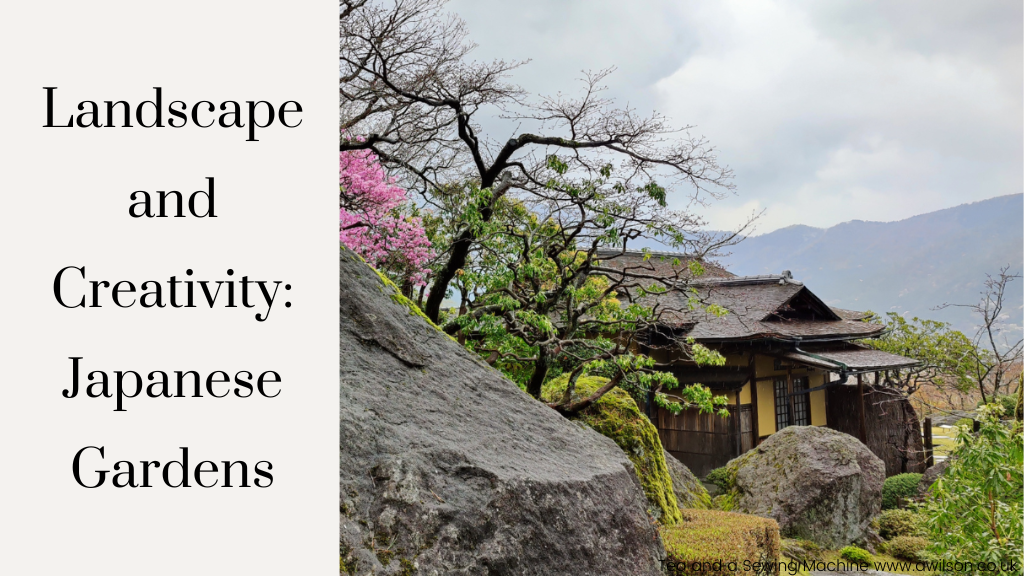
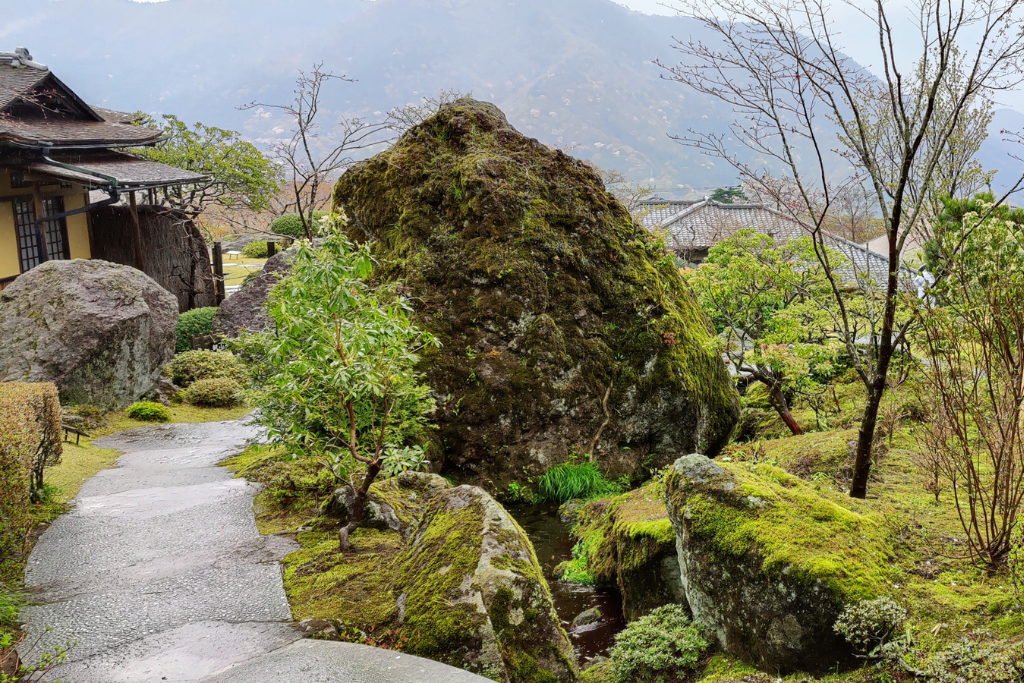
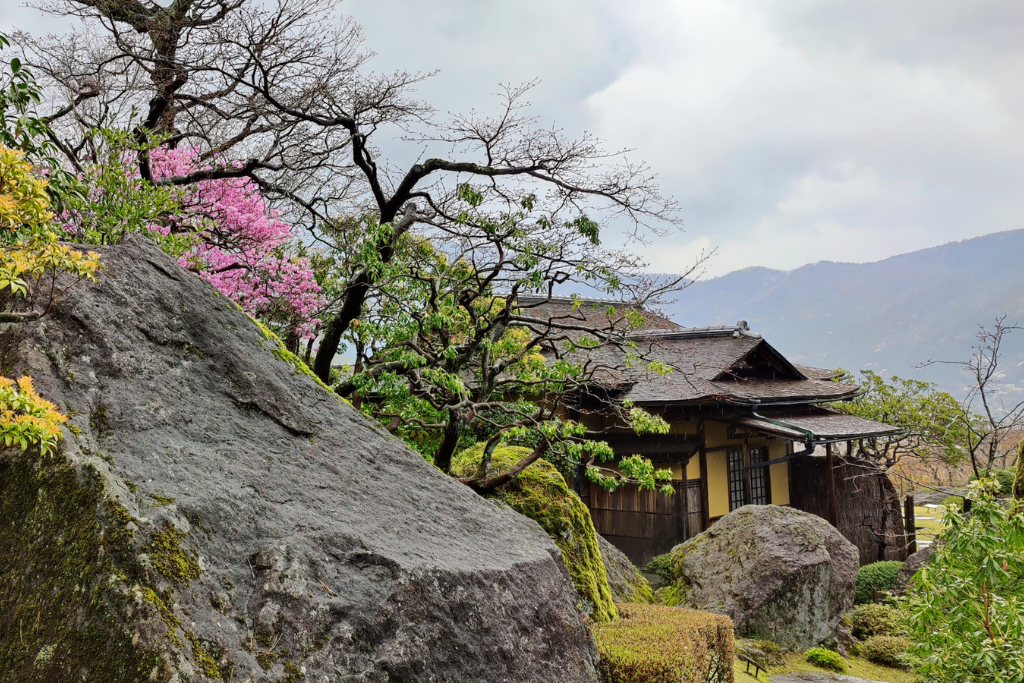
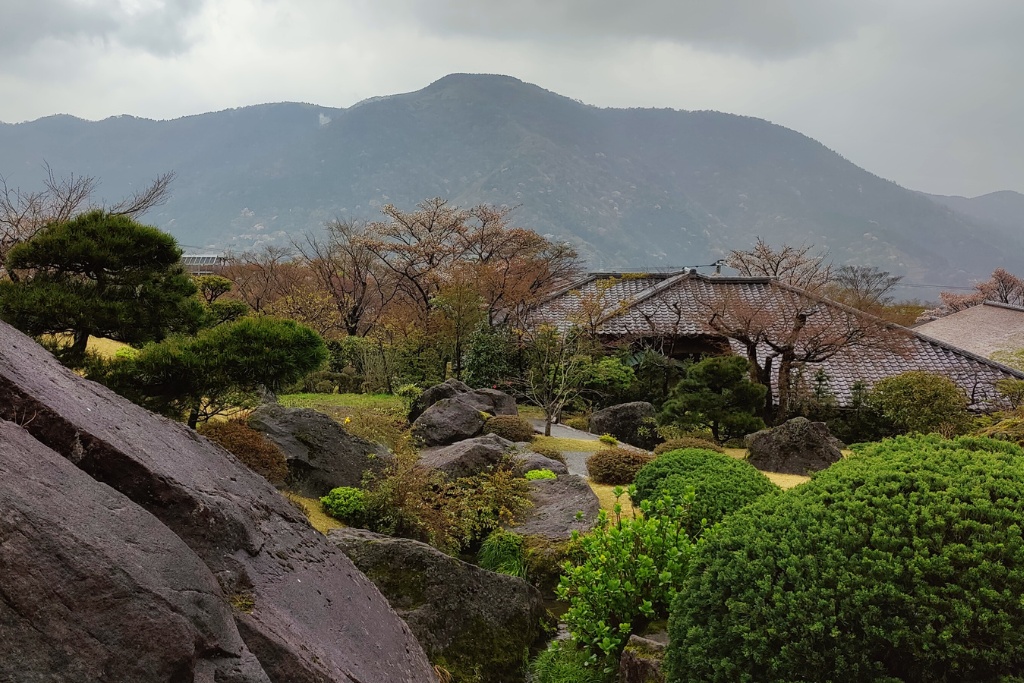
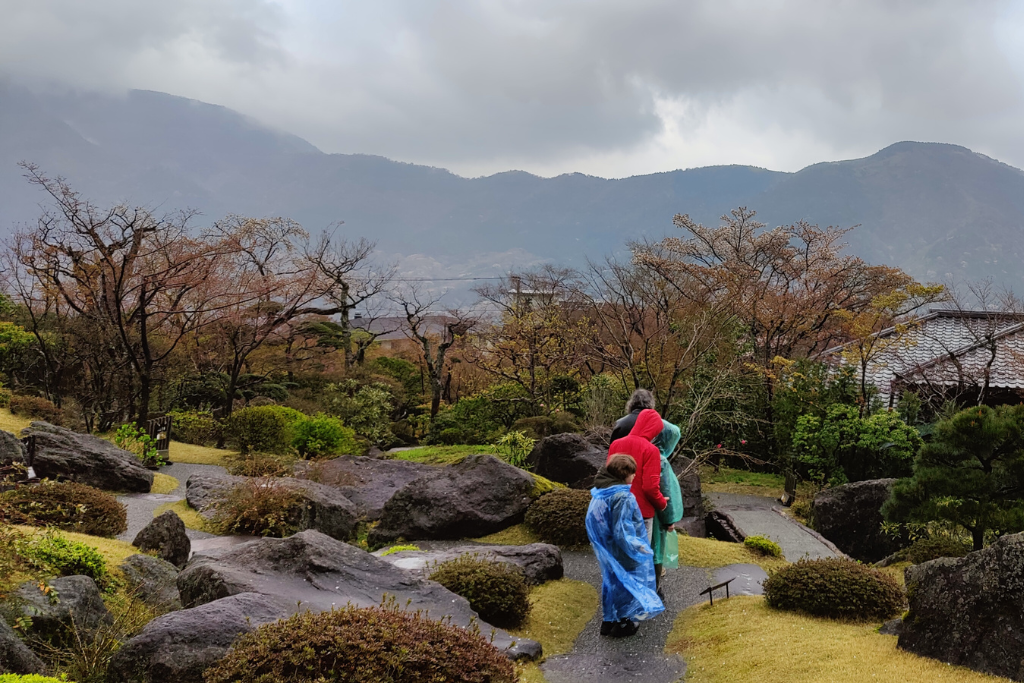
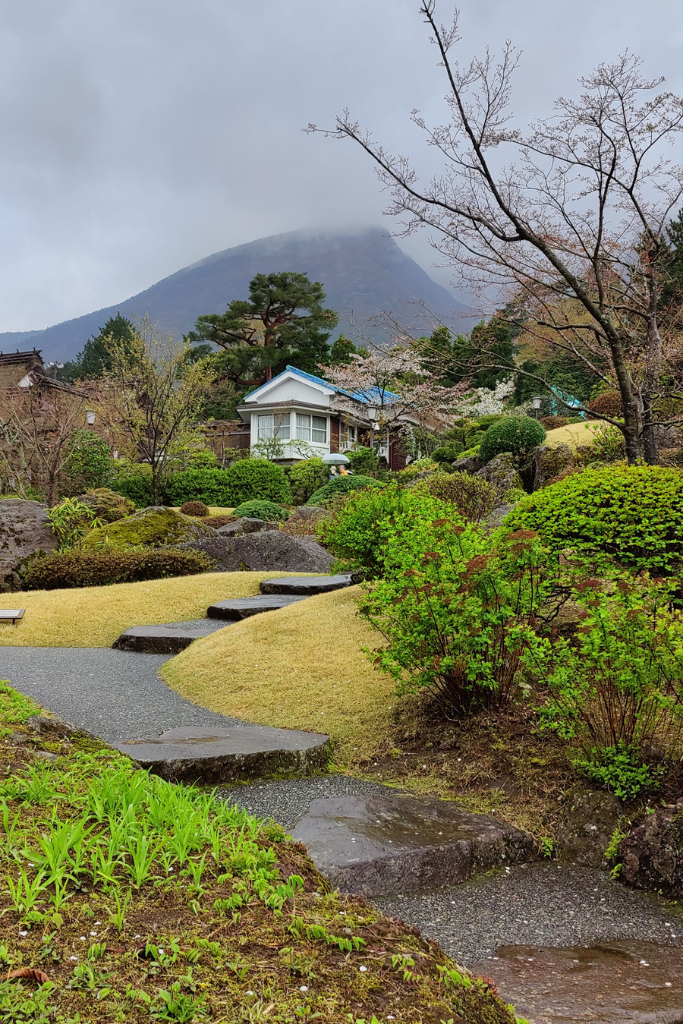
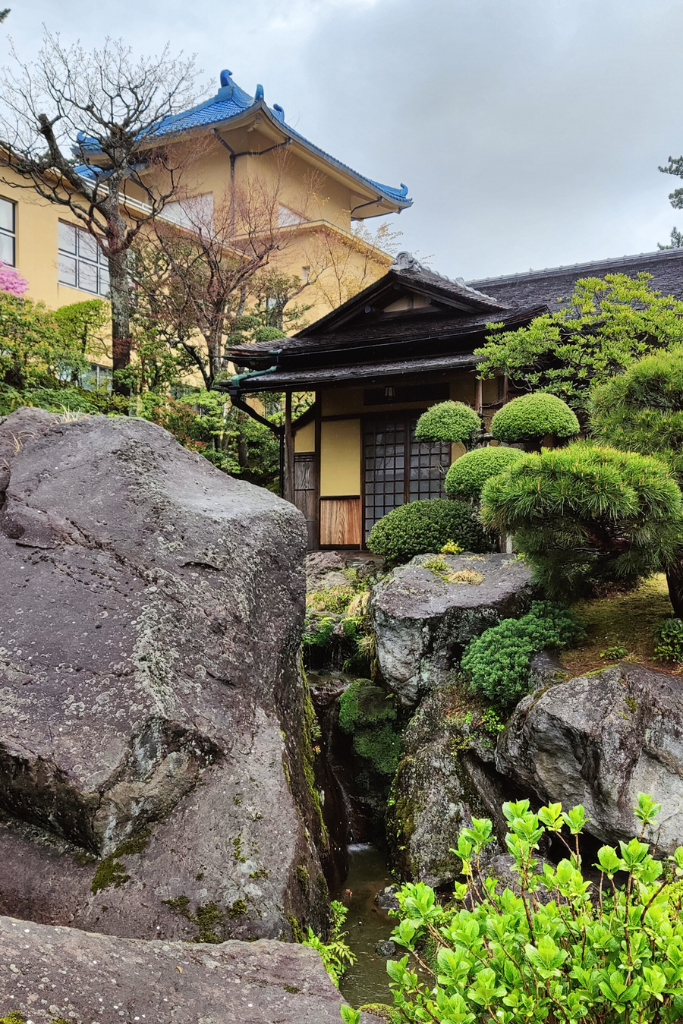
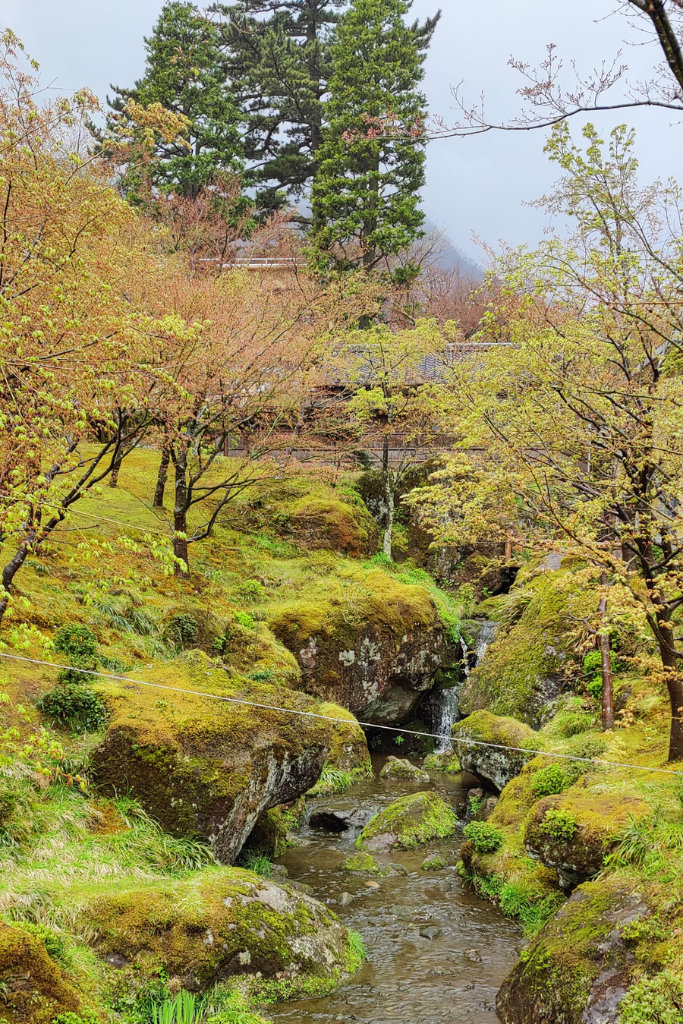
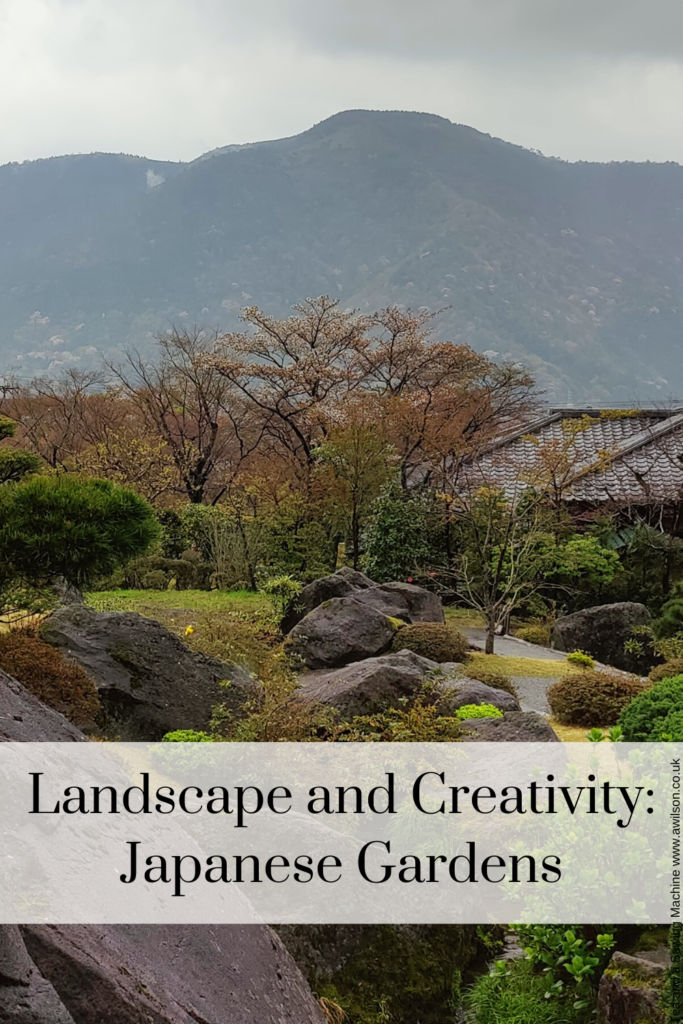


Hi Anna. Just loved your Japanese garden info. Thanks very much for sharing your thoughts on the topic with us. Have always loved the Japanese garden style. Now I know more about why I love it. I used to live in an area where they had planted Japanese Cherry trees. They were gorgeous, especially when in bloom. One day, I was walking my dog there and a breeze started to blow the blossoms all around us. It was magical. Mary (Marlton, NJ, USA)
Thank you. It is magical when the wind blows the petals.